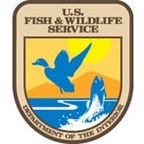Different Place, Same Results…Oh Snap
By Walt Rhodes
Dealing with change is merely a state of mind. When it comes to banding waterfowl you had better have the right one.
A lot of people have a hard time facing change. It does not matter whether it is the simple rearrangement of the living room furniture or an unintended move across the country. The disruption of the norm can lead to anxiety, stress, and just a general discomfort. Peoples’ minds will wander and create perceived and uncomfortable scenarios. Often, humans would just like things to stay the same.
Routines have their place but they can be boring. Change can result in new challenges, experiences, and friendships. If you view any upset in the status quo as an opportunity, then the benefits can be enormous.
I normally lead a waterfowl banding crew in Saskatchewan during August. The pandemic had different plans, so as a result, my 2020 banding participation was in South Dakota. Yes, I missed all things about banding in Canada but I got to see a new part of the United States, meet new people, and work with colleagues who are also good friends. It was nothing but a very enjoyable month.
As the pandemic continued into summer 2021 it became clear that Canada was off the table again. I was assigned to lead a crew in eastern Montana.
“Ok,” I thought, “no worries. Embrace, adapt, and implement what I know.” Then came the phone call that I was being reassigned to lead a crew in South Dakota but in a different area than 2020. “Foot on the clutch, shift gears, accelerate” was the next thought.
Trapping and banding waterfowl is not nearly as recipe-like as baking a cake but there are commonalities. Have good equipment, plan logistics, and look for ducky habitat are some key ingredients needed. After that, it is merely baiting the birds and setting the traps, the same process whether you are in Canada or South Dakota.
A reconnaissance flight in mid-August did not show a lot of promise but I’d be operating in a wetter part of the Dakotas so the ducks had to be there. After the rest of the crew arrived we made some traps, scouted, and secured landowner permissions, the latter leading to new connections.
Success started out slow but then the ducks started cooperating. They don’t always but you are usually catching something to keep everyone’s spirits hopeful for the intended results.
The days can begin to feel monotonous but I always tell my crew that arriving at a trap site should be viewed like Christmas morning. You never know what is going to be there.
Some days it’s the continuation of traps full of blue-winged teal until the next site is bursting with mallards or mixed amongst the teal is a stately drake redhead.
One day this summer we pulled into a site and I noticed a trap with few ducks and something odd peering out of the water that disappeared.
“What the heck,” I thought.
We got the ducks out of the trap as usual, and then with the net I bumped something hard. Up popped the grapefruit-sized head of a King Kong common snapping turtle.
“Whoa!” not what I was expecting, however, it was dang cool.
See, I worked on alligators in a previous job so this was close to that but I was quickly catapulted to the time I caught a similar-sized snapping turtle in a 30-gallon trash can growing up in Maryland. I was that kid in the marsh again 40 years later!
I got the turtle out of the trap, we took some pictures, and released it into the marsh. While the duck trapping was similar, because common snapping turtles do not occur where I band in Canada I would have never had that moment to relive something from my childhood if it wasn’t for an escape from normality.
Waterfowl banding can seem the same whether in Canada, the upper Midwest, or the Pacific Flyway but as long as your attitude is positive you will have an oh-snap moment.
